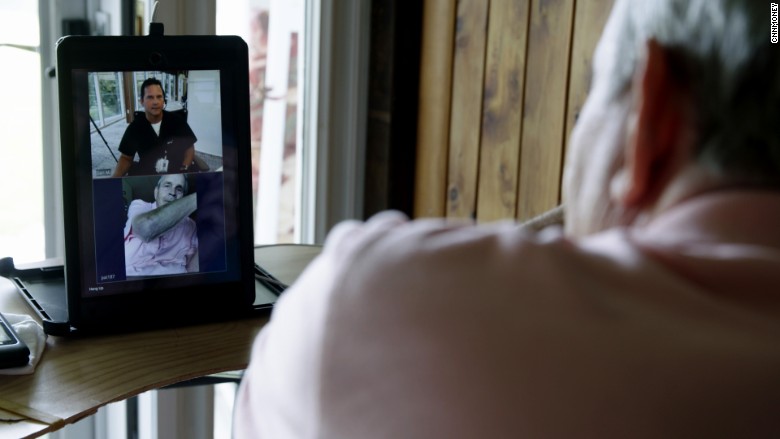
05 Oct Virtual Care Suggestions to Help Patients Heal at Home
Recently, I read an article about a hospital in St. Louis that has no hospital beds. Mercy Virtual Care Center staffs 330 people but has no patients who actually show up. As their title says—-they’re virtual.
Mercy provides hospital care that is focused on helping people heal in their homes. The typical doctor’s (or “navigator’s”) appointment is done via video chat with hospital-provided iPads. All of this is done in an attempt to keep costs down by keeping people out of the hospital or emergency room.
Obviously there are some patients who simply don’t need to be in a hospital with all that’s required, saving them time, travel inconvenience and money.
Would this virtual appointment also provide the navigator the opportunity to see a patient’s home? Perhaps it might give them a peek into their bedroom? What they find could have surprising drawbacks to the healing process.
Perhaps a virtual appointment would provide the opportunity to help the patient heal better if, along with health suggestions, the navigator could provide some suggestions for creating an integrative space.
Some conditions to look for are:
- Does the patient have access to outdoors or a window? Is there sunlight coming in? Even back in the 1800’s, Florence Nightingale knew that getting people outside in the sun could help them heal. Is the patient getting the benefit of natural light? A close connection to nature is important during this time.
- Minimal Clutter. Does there seem to be a lot of stuff sitting around? Do horizontal surfaces seem jam-packed? Looking at what’s going on behind the patient as they’re addressing the iPad can provide a clue as to the condition of their home. Too much clutter is self-defeating and does NOT provide an environment in which to heal.
- A Peaceful Bedroom. Does the room where the patient sleeps and rests provide privacy and quiet? Does it have a door?
I worked with a client whose daughter Meghan was going through a serious illness. The nurses and aides strongly encouraged my client to put a hospital bed in the living room where Meghan could be part of daily activities without having to get out of bed.
After a few days, Meghan complained that she had no privacy and wasn’t sleeping well. My client moved the bed into Meghan’s bedroom where she slept and healed in record time.
It’s important that a patient have the option to retreat behind a closed door when needed. Having this choice is empowering at a time when they may feel like they have very little say in their process.
Helping a patient create a space that supports their healing and well-being may be more challenging when the doctor’s visit is virtual. Some may the question whether it’s the navigator’s job to help their patient create an integrative space at home or not.
But looking for a few clues, asking a few questions about their space, and making a suggestion or two during the course of a virtual appointment could be a tipping point in someone’s healing journey.
